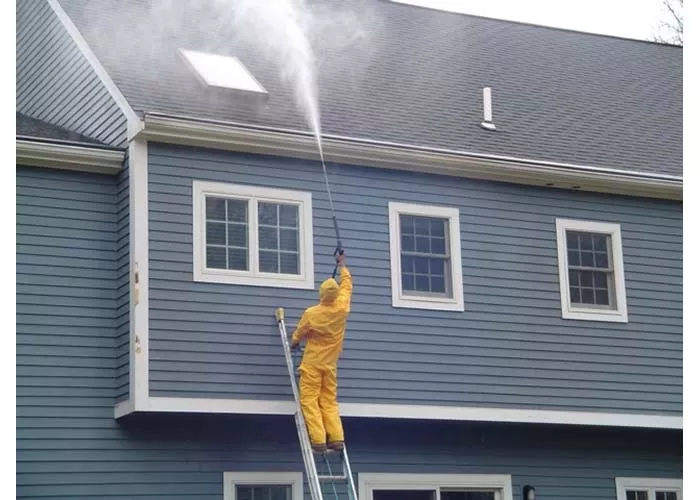Pressure washers have become indispensable tools for homeowners looking to keep their outdoor spaces clean and well-maintained. From blasting away grime on driveways to revitalizing dirty decks, these powerful machines offer convenience and efficiency. However, choosing the right pressure washer for home use can be overwhelming with the plethora of options available in the market. In this comprehensive guide, we’ll explore various factors to consider when selecting a pressure washer, review popular models, and provide valuable tips for optimal usage and maintenance.
Product Reviews and Comparisons
AR Blue Clean AR383
The AR Blue Clean AR383 is a popular electric pressure washer known for its versatility and ease of use. With a maximum pressure output of 1,900 PSI and a water flow rate of 1.5 gallons per minute (GPM), it effectively tackles a range of cleaning tasks. Its lightweight design and onboard storage for accessories enhance convenience. However, some users report issues with the plastic hose connection and durability concerns over time.
Sun Joe SPX3000
The Sun Joe SPX3000 is another top contender in the home pressure washer market. Boasting a maximum pressure of 2,030 PSI and a water flow rate of 1.76 GPM, it delivers impressive cleaning power. The dual detergent tanks allow for convenient switching between cleaning solutions, while the Total Stop System enhances safety and prolongs motor life. On the downside, some users find the hose connection fittings prone to leaks.
Simpson Cleaning MSH3125 MegaShot
For those seeking gas-powered options, the Simpson Cleaning MSH3125 MegaShot is a reliable choice. With a Honda GC190 engine providing 3,200 PSI and 2.5 GPM, it’s ideal for heavy-duty cleaning tasks. The welded steel frame ensures durability, while the pneumatic tires enhance portability. However, the gas-powered operation may be less convenient for some users, and maintenance requirements are higher compared to electric models.
Features to Consider
Pressure Output
The pressure output of a pressure washer is measured in pounds per square inch (PSI) and determines its cleaning power. Higher PSI values are suitable for tougher cleaning jobs, such as removing stubborn stains and paint.
Water Flow
Water flow rate, measured in gallons per minute (GPM), indicates how much water the pressure washer uses during operation. A higher GPM typically results in faster cleaning, but it also means more water consumption.
Hose Length
A longer hose provides greater reach and flexibility, allowing users to clean larger areas without constantly moving the unit. However, longer hoses may result in a slight loss of pressure.
Motor Type
Pressure washers can be powered by electric motors or gas engines. Electric models are generally more compact, quieter, and easier to maintain, while gas-powered ones offer higher pressure and greater mobility.
Portability
Portability is crucial for maneuvering the pressure washer around the property. Look for features such as built-in wheels and ergonomic handles for easy transport.
Price Range
Home-use pressure washers come in a wide range of prices, typically ranging from $100 to $500 or more. Lower-priced models are often electric and suitable for light to medium-duty tasks, while higher-priced ones may offer more power and durability, especially in gas-powered options.
Usage Tips
1. Start with the Right Nozzle: Choose the appropriate nozzle for the task at hand, adjusting the spray pattern and intensity accordingly.
2. Maintain a Safe Distance: Keep a safe distance between the nozzle and the surface being cleaned to avoid damage.
3. Use Detergent Wisely: Apply detergent sparingly and follow manufacturer recommendations to prevent residue buildup.
4. Work in Sections: Divide larger cleaning areas into manageable sections to ensure thorough and efficient cleaning.
5. Rinse Thoroughly: After applying detergent, rinse the surface thoroughly with clean water to remove any residue.
Safety Precautions
1. Wear Protective Gear: Use safety goggles and gloves to protect against debris and chemical splashes.
2. Avoid Electrical Hazards: Keep electrical components away from water sources and use ground fault circuit interrupters (GFCIs) when operating electric pressure washers.
3. Mind Your Surroundings: Be aware of your surroundings and avoid spraying windows, electrical outlets, and delicate plants.
4. Release Pressure Safely: Always release pressure from the system before disconnecting hoses or performing maintenance.
Maintenance Advice
1. Regular Cleaning: After each use, flush the system with clean water to remove any debris and prevent clogging.
2. Inspect and Replace Parts: Regularly inspect hoses, nozzles, and seals for signs of wear and tear, replacing them as needed to maintain optimal performance.
3. Store Properly: Store the pressure washer in a clean, dry place away from extreme temperatures and direct sunlight to prevent damage.
Brand Reputation
When choosing a pressure washer, consider the reputation of the brand and its customer service quality. Established brands like Karcher, Sun Joe, and Simpson Cleaning are known for producing reliable products and providing excellent customer support.
Environmental Considerations
For eco-conscious users, there are environmentally friendly options available, such as electric pressure washers that produce fewer emissions and consume less water compared to gas-powered models. Additionally, implementing water-saving techniques such as using a broom or mop for light cleaning tasks can help minimize water usage.
Conclusion
Selecting the best pressure washer for home use involves careful consideration of factors such as pressure output, water flow, motor type, and portability. By assessing your specific cleaning needs and prioritizing features that align with them, you can make an informed decision. Remember to prioritize safety, follow usage tips, and perform regular maintenance to ensure the longevity and optimal performance of your pressure washer. With the right tool at your disposal, keeping your outdoor spaces clean and pristine becomes a breeze.

